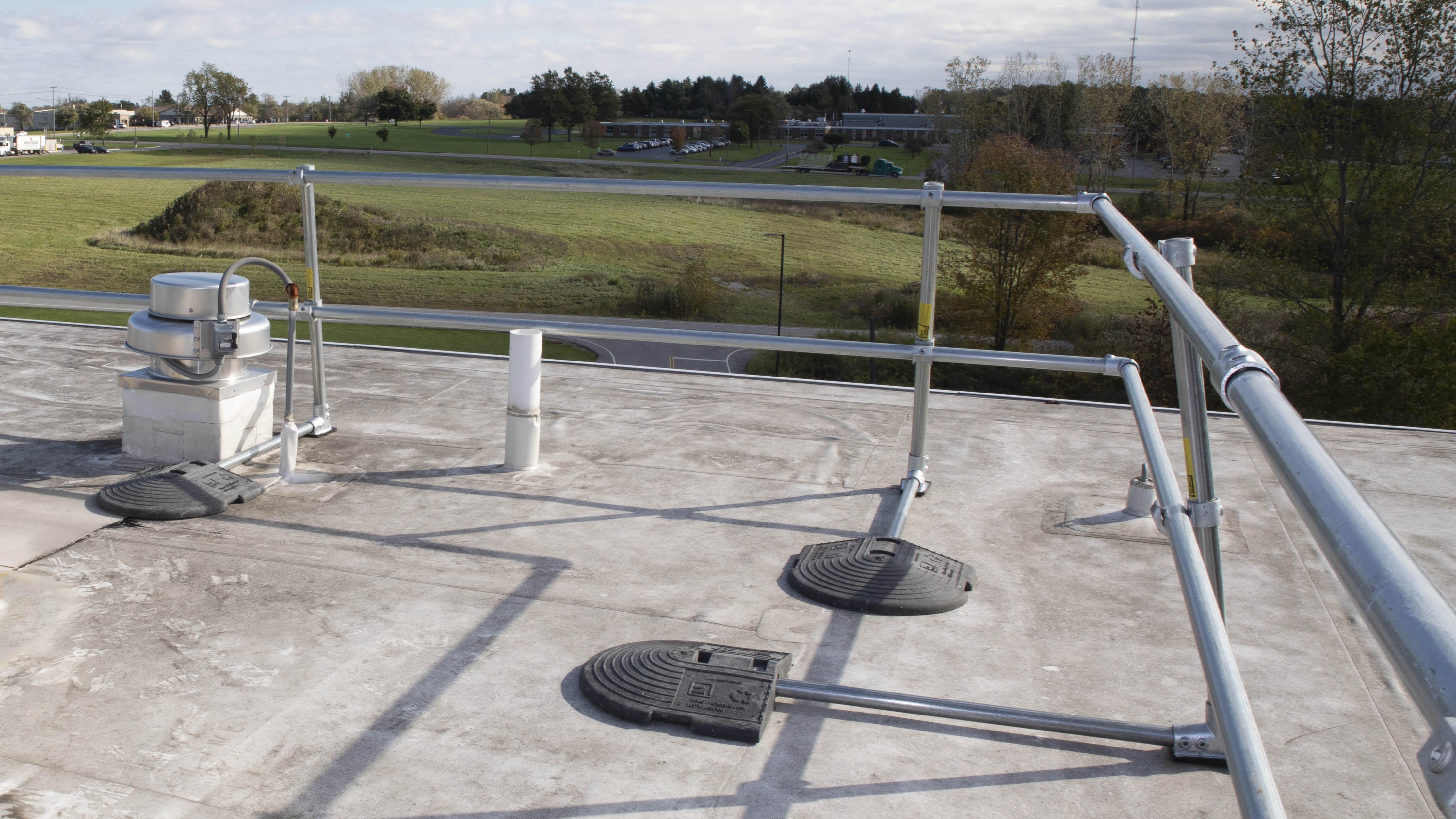Key Differences Between Cal-OSHA and Federal OSHA Guardrails

California OSHA code (Cal-OSHA) is notorious for being more stringent across the board on their requirements than federal OSHA. Their fall protection requirements are no different. Because of this, we here at Simplified are constantly asked, "This says it meets OSHA, but what about Cal-OSHA?" This is a valid question. However, it can be a difficult one to answer. One must first understand what OSHA says about the topic. From there, knowing what Cal-OSHA requires in addition or how it differs will help determine what is truly needed.

We will focus on a few specific requirements on guardrails for fall protection. Keep in mind, this is not intended to indicate the standards for where the railing is needed. Download our OSHA regulations ebook if you have questions on when and where railing is necessary.
What makes a guardrail compliant in general industry or not? Here are a few items that OSHA 1910.29(b) mentions:
-
"The top edge height of top rails, or equivalent guardrail system members, are 42 inches (107 cm), plus or minus 3 inches (8 cm), above the walking-working surface." - 1910.29(b)(1)
-
"Midrails are installed at a height midway between the top edge of the guardrail system and the walking-working surface;" - 1910.29(b)(2)(i)
-
"Guardrail systems are capable of withstanding, without failure, a force of at least 200 pounds (890 N) applied in a downward or outward direction within 2 inches (5 cm) of the top edge, at any point along the top rail." - 1910.29(b)(3)
This is certainly not an exhaustive list of all the specifics, there is no better resource for that information than directly on OSHA’s website under 1910.29(b). These are merely common aspects of a guardrail that you will see across the board. In understanding these, you can quickly determine if a railing is going to meet code.
Now, what does Cal-OSHA have to say about this? Again, here are the equivalent standards in Cal-OSHA’s General Industry Guardrailing Requirements:
-
"A standard guardrail shall consist of top rail, midrail or equivalent protection, and posts, and shall have a vertical height within the range of 42 inches to 45 inches from the upper surface of the top rail to the floor, platform, runway, or ramp level. (Note: the permissible tolerance on height dimensions is one inch)." - Title 8, 3209(a)
-
"The midrail shall be approximately halfway between the top rail and the floor, platform, runway, or ramp." - Title 8, 3209(a) cont.
-
"All guardrails and other permissible types, including their connections and anchorage, shall be designed for a live load of 20 pounds per linear foot applied either horizontally or vertically downward at the top rail." - Title 8, 3209(b)
The fundamental differences here that should be pointed out are the differences in allowable height and loading capacity. When figuring out the tolerances for the OSHA guardrail height, the minimum allowed is 39". Cal-OSHA’s 1” tolerance only allows for a minimum height of 41”.

As for the load calculations, it is imperative to know that there is a difference between a concentrated load and a live load. The 200 lb concentrated load will be required on both Cal-OSHA and OSHA. Determining the live load is much more complicated, as it deals with the overall dimensions and layout of the railing. Calculations will need to be done to conclude that all possible scenarios of loading will not push the railing out of compliance.
Cal-OSHA does give a note here to say that under certain circumstances, railing may need to be designed for additional strength. These scenarios will not apply to everyone. If you have any questions or concerns, it is best to work with a fall protection expert when discussing your railing solution in California.
Always make sure that the railing you pick for your fall protection has been tested to meet and exceed what is compliant. Remember, OSHA and Cal-OSHA are giving a bare minimum of what would be determined safe. Fortunately, railings such as KeeGuard Safety Railing, have been third-party tested to surpass the minimum set by OSHA and Cal-OSHA.
Anytime someone says railing is tested to OSHA, ask for the testing documentation. This information should be readily available. It’s people's lives on the line.



